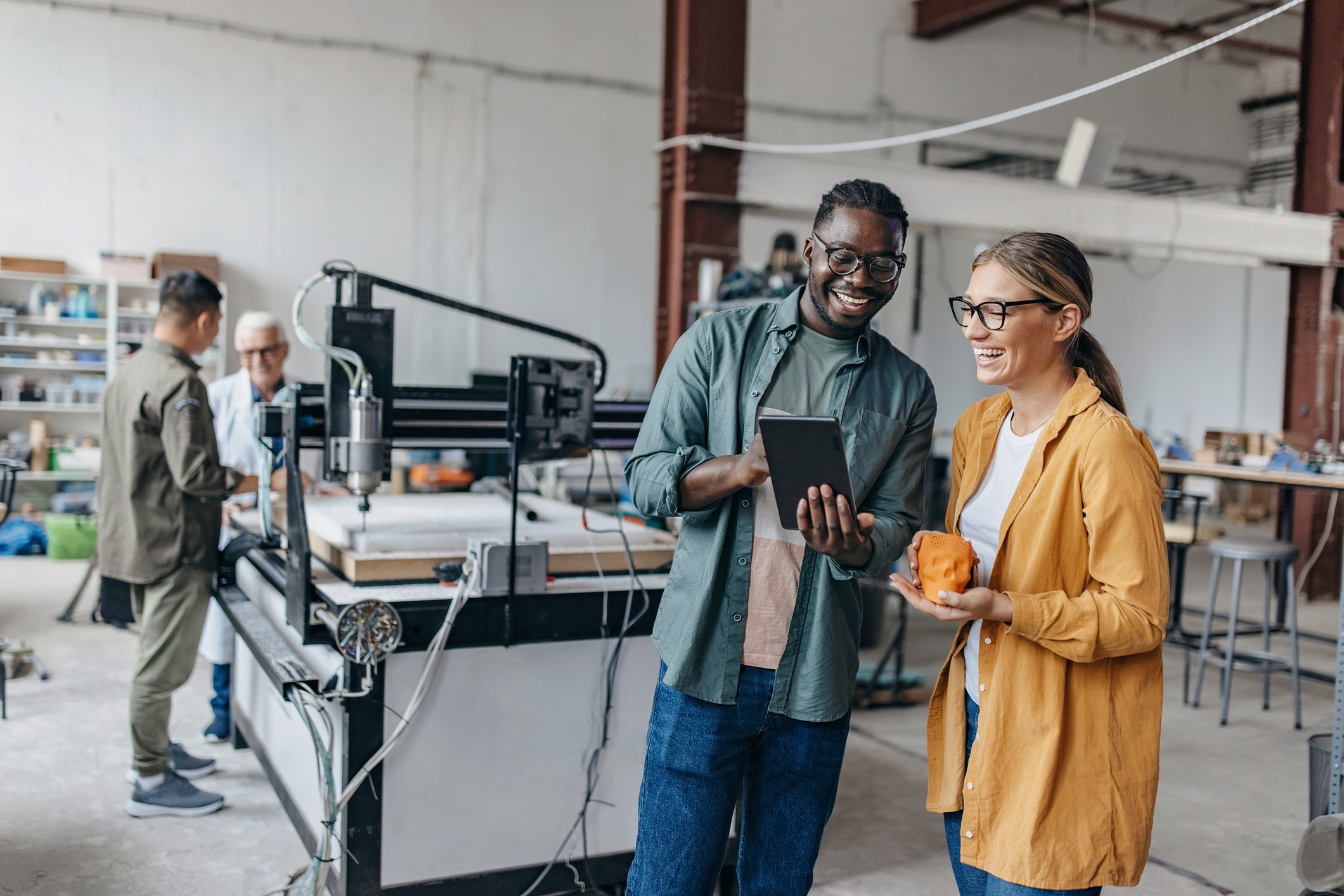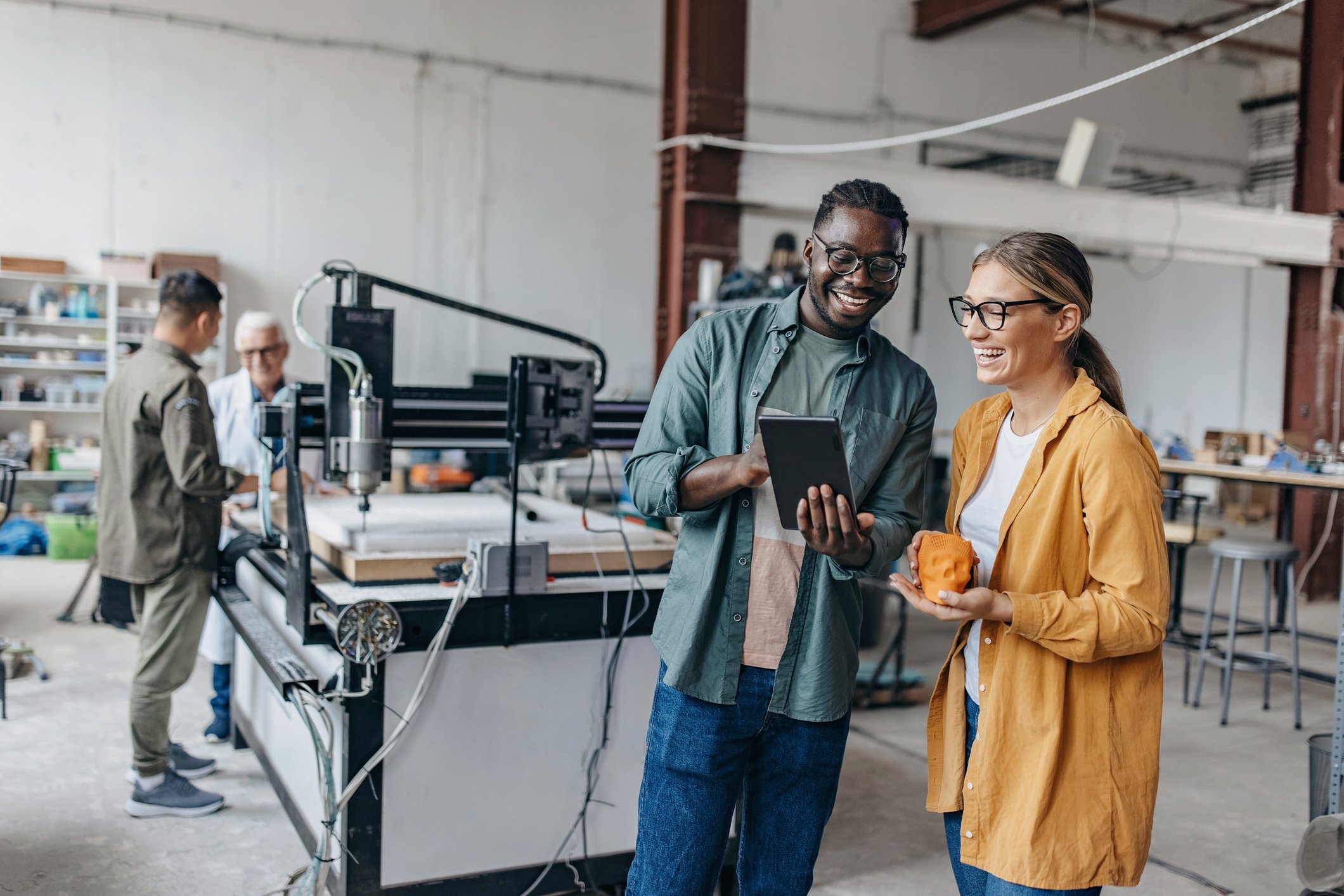Even if you're invested in 3D Systems (DDD 4.00%) or Stratasys (SSYS 1.31%) and closely following the 3-D printing space, you might not be familiar with Shapeways. That's to be expected because it isn't a public company and has an entirely different business model than the publicly traded 3-D printing companies.
Why write about a private 3-D printing company? And why should you care if you're a 3-D printing investor? Because Shapeways has just moved a considerable step closer to an IPO or a possible buyout. That's because Andreessen Horowitz, one of the top Silicon Valley venture capital firms, recently led a round of funding that raised a cool $30 million for this 3-D printing services company. This is a big bet on Shapeways' business model, which I also think is fantastic. The deal follows $17.3 million raised across several rounds of funding from a few other VC firms. This latest big injection of cash, which came in late April, will help Shapeways further grow, and move closer to the end goal of VC firms. VC firms nurture their investments along so they can most profitably cash out -- via either a public offering or a buyout -- within a reasonable time period.
Shapeways' business model
Shapeways, which is a 2010 spin-out from the lifestyle incubator of Philips Electronics, produces 3-D printed objects for customers. It doesn't sell 3-D printers or materials. Granted, 3D Systems, Stratasys, ExOne, and voxeljet also have services businesses, in addition to making 3-D printers. One thing that makes Shapeways unique is that its customers could be anyone from Joe Consumer to Susan Small Business Owner to Bill Big Business Owner. The two former categories make up the bulk to all of its business. This is in contrast to the publicly traded 3-D printing companies, which largely provide 3-D printing services to the latter two categories.
More importantly, a core part of Shapeways business model involves coordinating a marketplace where people can buy and sell a wide variety of 3-D printed products. As Wired aptly put it:
When someone pushes the "buy" button for that Minecraft figurine in bronze, Shapeways' printers get to work producing the object, and then in a sort of Amazon-like way, handle everything for the seller -- including payments and shipping.
This is a very appealing way for hobbyists and professional designers to design and sell their products. It removes the sizable upfront costs of buying a 3-D printer -- or several 3-D printers, as it's unlikely that a single printer would meet the needs of many professional designers.

3-D printed "light poem." Source: Shapeways
One doesn't need to know how to use 3-D printing design software to design something, as the company has offerings targeted at everyday users. For instance, its "configurator" allows people to customize various basic configurations it makes available. The "light poem" in the picture, which can hold an LED light or pens or flowers, was made using the configurator. The user gets his or her choice of materials and words to have printed on the product.
Shapeways' two factories -- one in New York City and one in The Netherlands -- are equipped with high-end, industrial-grade 3-D printers. So, for a fee, anyone can have access to much higher quality output than is possible using consumer, "prosumer," and even some of the commercial systems on the market. Shapeways can crank out products made of plastics, ceramics, glass, and a wide variety of metals, and is working to expand its materials offerings. In past interviews, Shapeways co-founder and CEO Peter Weijmarshausen has said that the company uses 3-D printers made by 3D Systems, Stratasys, EOS, and Objet (Objet is now part of Stratasys). He's also stated that the company uses partners to produce product, in addition to fulfilling some of its orders in-house.
Weijmarshausen has said that Shapeways wants to build factories that are as close as possible to its end-users, which would help speed up turnaround time, among providing other benefits. Its customers are concentrated in Europe, and on the East and West Coasts of the United States. Since the company already has locations in Europe and on the East Coast, it's widely speculated that the next factory will be located on the West Coast.
Why Shapeways seems an attractive future buyout candidate
Shapeways' business model would seem a nice fit with 3D Systems or Stratasys at some point. Its business is reportedly growing nicely, and both leading 3-D printing companies have recently been expanding their service offerings. In April, Stratasys announced that it was buying two 3-D printing service bureaus, including Solid Concepts, the largest independent service bureau in North America, while 3D Systems announced it was acquiring Robtec, the largest Latin American service bureau.
Shapeways uses printers made by both these 3-D printing industry leaders, and perhaps partners with them for some production. If it doesn't partner with them, it partners with independent service bureaus that use their printers. The more business Shapeways brings in, the more work that it has for the printers made by 3D Systems and Stratasys, whether the printing is done in-house or by a partner.
Lastly, I wanted to note that it's just coincidental that I'm writing this article on the heels of 3D Systems' announcement of its secondary stock offering. I'm in no way suggesting that 3D Systems would be currently interested in buying Shapeways. Based on the scant amount of readily available public data about Shapeways' financials, it appears that Shapeways is not yet profitable. So, the company doesn't seem to fit 3D Systems' acquisition M.O. 3D Systems' appetite is usually for small, profitable companies that would be immediately accretive to its earnings.
Foolish final thoughts
Investors should keep their eyes on Shapeways, as this growing company with a unique business model seems like it could become part of the public player landscape in some form in a relatively short time.






